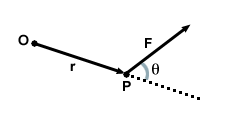Please wait while we process your payment
If you don't see it, please check your spam folder. Sometimes it can end up there.
If you don't see it, please check your spam folder. Sometimes it can end up there.
Please wait while we process your payment

By signing up you agree to our terms and privacy policy.
Don’t have an account? Subscribe now
Create Your Account
Sign up for your FREE 7-day trial
By signing up you agree to our terms and privacy policy.
Already have an account? Log in
Your Email
Choose Your Plan
Individual
Group Discount
Save over 50% with a SparkNotes PLUS Annual Plan!
 payment page
payment page
Purchasing SparkNotes PLUS for a group?
Get Annual Plans at a discount when you buy 2 or more!
Price
$24.99 $18.74 /subscription + tax
Subtotal $37.48 + tax
Save 25% on 2-49 accounts
Save 30% on 50-99 accounts
Want 100 or more? Contact us for a customized plan.
 payment page
payment page
Your Plan
Payment Details
Payment Summary
SparkNotes Plus
You'll be billed after your free trial ends.
7-Day Free Trial
Not Applicable
Renews July 21, 2025 July 14, 2025
Discounts (applied to next billing)
DUE NOW
US $0.00
SNPLUSROCKS20 | 20% Discount
This is not a valid promo code.
Discount Code (one code per order)
SparkNotes PLUS Annual Plan - Group Discount
Qty: 00
SparkNotes Plus subscription is $4.99/month or $24.99/year as selected above. The free trial period is the first 7 days of your subscription. TO CANCEL YOUR SUBSCRIPTION AND AVOID BEING CHARGED, YOU MUST CANCEL BEFORE THE END OF THE FREE TRIAL PERIOD. You may cancel your subscription on your Subscription and Billing page or contact Customer Support at custserv@bn.com. Your subscription will continue automatically once the free trial period is over. Free trial is available to new customers only.
Choose Your Plan
This site is protected by reCAPTCHA and the Google Privacy Policy and Terms of Service apply.
For the next 7 days, you'll have access to awesome PLUS stuff like AP English test prep, No Fear Shakespeare translations and audio, a note-taking tool, personalized dashboard, & much more!
You’ve successfully purchased a group discount. Your group members can use the joining link below to redeem their group membership. You'll also receive an email with the link.
Members will be prompted to log in or create an account to redeem their group membership.
Thanks for creating a SparkNotes account! Continue to start your free trial.
We're sorry, we could not create your account. SparkNotes PLUS is not available in your country. See what countries we’re in.
There was an error creating your account. Please check your payment details and try again.
Please wait while we process your payment

Your PLUS subscription has expired
Please wait while we process your payment
Please wait while we process your payment

Rotational Dynamics
Having established rotational kinematics, it seems logical to extend our study of rotational motion to dynamics. Just as we began our study of Newtonian dynamics by defining a force, we start our study of rotational dynamics by defining our analogue to a force, the torque. From here, we will derive a general expression for the angular acceleration produced by a torque, which is quite similar to Newton's Second Law. We will also define a new concept, the moment of inertia of a rigid body.
When we studied translational motion, a given force applied to a given particle always produced the same result. Because in rotational motion we consider rigid bodies rather than particles, we cannot make such a general statement about the effect of an applied force. For example, if the force is applied to the center of the object, it will not cause the object to rotate. If, however, it is applied to the edge of a rotating object, it can have quite a large effect on the rotation of the object. With this aspect of rotational motion in mind, we define torque to generally describe the effect a force will have on rotational motion.
Consider point P a distance r away from an axis of rotation, and a force F
applied to P at an angle of θ to the radial direction, as shown below.

| τ | = Fr sinθ | ||
| τ | = r×F |
This definition can be difficult to grasp conceptually, so we will consider some examples to clarify. The best example of a torque is the force applied to opening a door. The easiest way to open the door (in other words, the way to provide maximum torque) is to grab a point the furthest away from the hinges (like the handle), and pull perpendicular to the door itself. In this way, we give a maximum r, and sinθ = 1. The closer to the hinges one pulls, the more force must be exerted to provide the same torque on the door. In addition, the angle with which the torque is applied changes the force necessary for a given torque. The case of pulling perpendicular to the door requires the least force.
Torque plays the same role in rotational motion as force plays in translational motion. In fact, we can restate Newton's First Law to make it apply to rotational motion:
If the net torque acting on a rigid object is zero, it will rotate with a constant angular velocity.
Though this statement helps us to gain a conceptual understanding of exactly how a torque influences rotational motion, we need a rotational analogue to Newton's Second Law, which will serve as a quantitative basis for rotational dynamics.
Please wait while we process your payment

